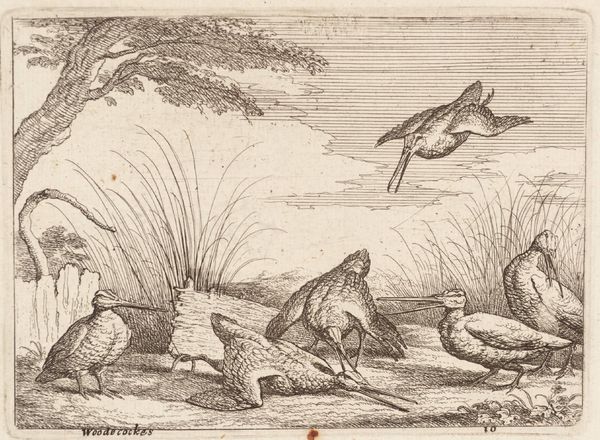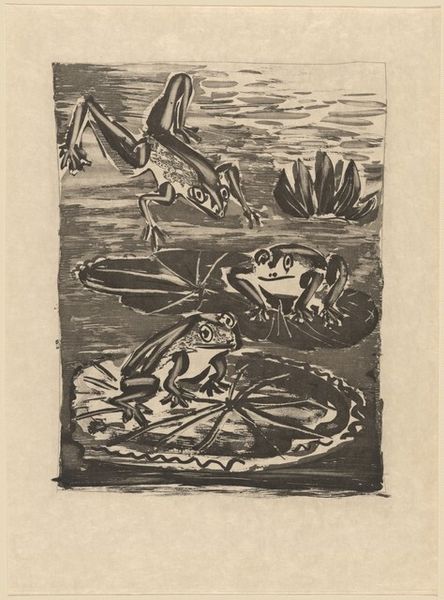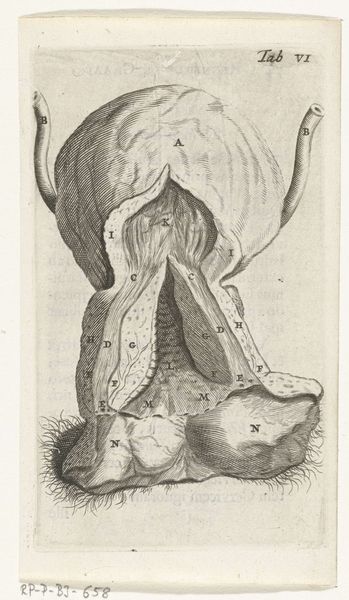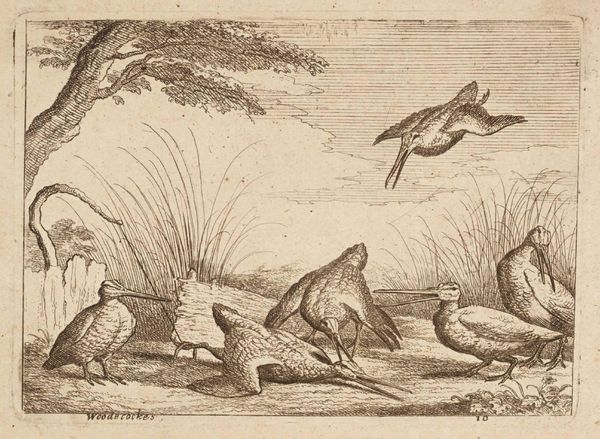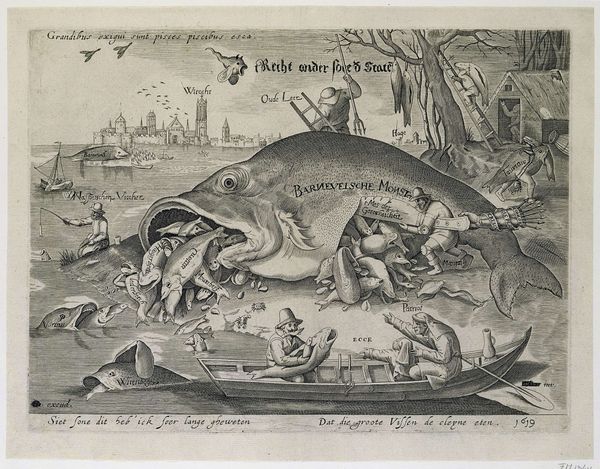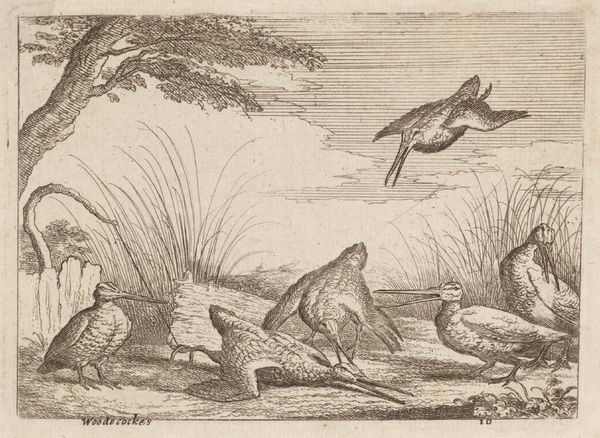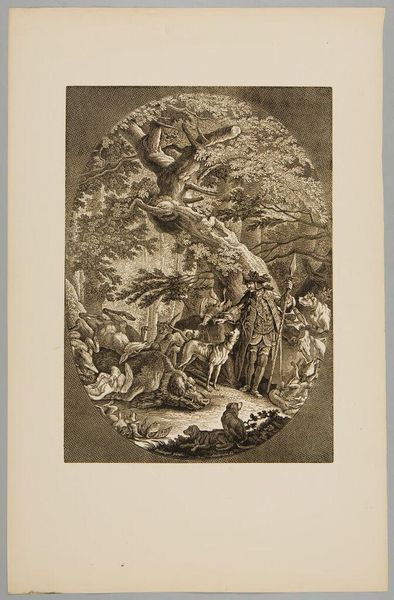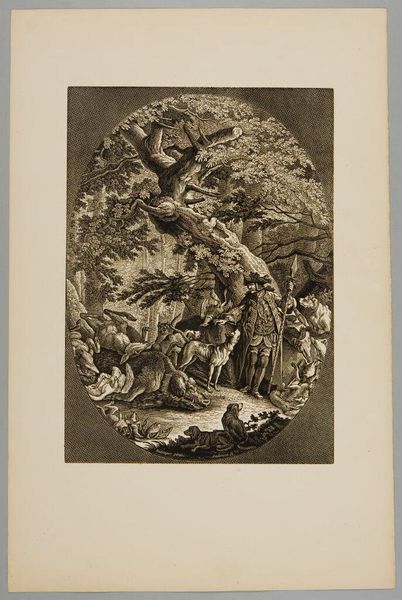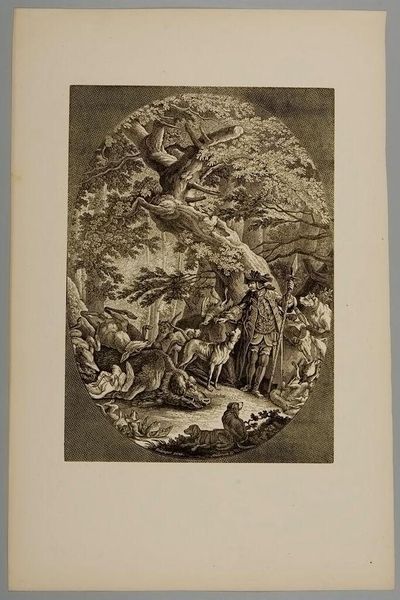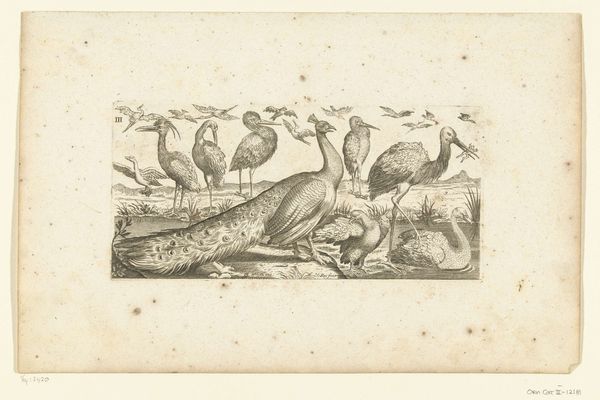
drawing, print, ink, engraving
#
drawing
#
baroque
# print
#
figuration
#
ink
#
history-painting
#
engraving
#
realism
Dimensions: width 276 mm, height 438 mm
Copyright: Rijks Museum: Open Domain
This is an anatomical study of the pancreas and kidneys made by Pieter van Gunst, sometime between the late 17th and early 18th century. It is an engraving, a printmaking technique which involves incising an image onto a metal plate, inking the plate, and then pressing it onto paper. Look closely, and you can see the characteristic crisp lines and fine details achieved through this process. The artist's skill is evident in the precise rendering of the anatomical forms, capturing their texture and complexity. Engraving was a highly skilled and labor-intensive craft, requiring years of training to master. In the 17th and 18th centuries, prints were a primary means of disseminating knowledge and imagery, playing a crucial role in scientific illustration. This print represents a convergence of art, science, and craft, reflecting the social and intellectual values of its time. It also serves to remind us that medical knowledge was intimately tied to artisanal practice.
Comments
No comments
Be the first to comment and join the conversation on the ultimate creative platform.
